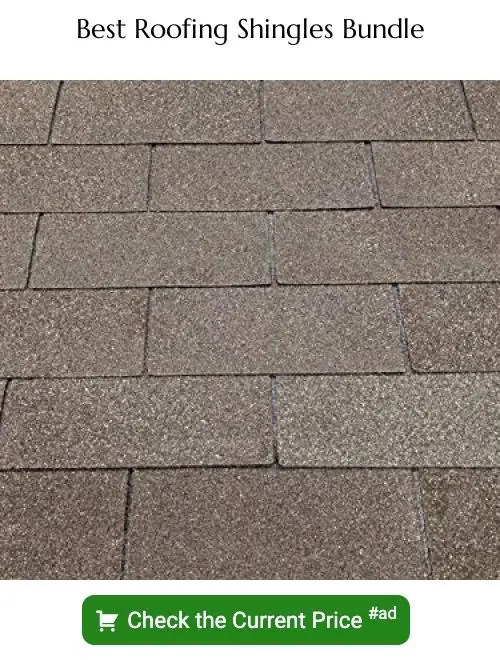Last updated on
Learn how to accurately calculate the number of shingles required for your roofing project to ensure proper coverage and minimize waste.
Key takeaways:
- Accurately calculate the area of your roof by measuring length and width
- Consider material, style, climate suitability, warranty, energy efficiency, and color when choosing shingles
- Estimate the number of shingles needed by factoring in waste and considering overhangs, hip and ridge areas, and starter strips
- A square of roof is 100 square feet and typically requires three bundles of shingles
- Add extra shingles for waste and trim to avoid mid-project material shortages
Calculating the Area of Your Roof

To proceed with an accurate calculation, measure the length and width of each plane on the roof, including dormers. For a simple gable roof, you’ll have two planes; more complex roofs may have multiple planes. Multiply the length by the width for each plane to find the area in square feet.
It’s essential to add the area of each plane together to get the total square footage of the roof. If your roof has triangular planes, calculate the area by multiplying the base by the height and divide by two. Remember to consider overhangs in your measurements as they should also be covered by shingles.
Don’t forget that accuracy is crucial to ensure you purchase the correct amount of roofing material. In cases where the roof is too steep or too large to measure safely from the top, you can measure from the ground by calculating the building’s footprint and making necessary adjustments for pitch, which will be covered in more detail in a later section. Keep a note of your measurements and calculations, as they will be the foundation for estimating the number of shingles required.
Choosing the Right Shingles for Your Roof
When selecting shingles, consider several key factors:
**Material:** Asphalt shingles are popular for their cost-effectiveness and ease of installation. Other materials include wood, metal, tile, and slate, each offering unique benefits like longevity, aesthetic, and resistance to specific climates.
**Style:** Shingles come in various styles, such as three-tab, architectural, and designer shingles, affecting the appearance and performance of your roof.
**Climate Suitability:** Ensure the shingles selected are suitable for the local weather. Some are designed for high wind resistance, while others are treated to prevent algae growth in damp climates.
**Warranty:** Look for options with a strong manufacturer’s warranty that covers defects and potential durability issues.
**Energy Efficiency:** Consider energy-efficient shingles, which can help reduce cooling costs by reflecting sunlight.
**Color:** Choose a color that complements your home’s exterior and meets any homeowner association guidelines. Lighter colors can reflect more sunlight, reducing heat absorption.
By weighing these considerations, you’ll ensure your shingle choice meets both your aesthetic preferences and functional requirements.
Estimating the Number of Shingles You Need
After establishing the total area of your roof in square feet and choosing the appropriate shingle type for the project, it’s time to determine the precise quantity of material necessary. Roofing shingles are often sold by the bundle, with three bundles making up one roofing square—a term that equates to 100 square feet.
Here’s how to estimate the number of shingles required:
**Factor in Waste:** Account for waste, especially relevant for roofs with more complex shapes or a significant number of hip and ridge lines. A standard waste factor is 10%, but this can increase up to 15% for more intricate roofing designs.
**Consider Overhangs:** If your roof design includes eave or gable-end overhangs, add the area of these overhangs to the total roofing area to ensure complete coverage.
**Hip and Ridge Shingles:** Specific shingles are made for hip and ridge areas, which require separate calculation. Divide the length of the hips and ridges by three—since each shingle covers about three linear feet—to get the number of shingles necessary for these areas.
**Starter Strips:** You’ll also need to determine the amount of starter strip shingles required; this is calculated by the linear feet along the eaves and rakes.
By calculating the quantity of shingles for the main roof area, along with additional material for waste, overhangs, hips, ridges, and starter strips, you’ll ensure you purchase an adequate amount of roofing material, avoiding the inconvenience of a mid-project material shortage.
How Many Bundles Of Shingles in a Square
Understanding the standard measurement in roofing is essential for purchasing materials. Most shingle manufacturers package products to cover one square of roof – this is a 10-foot by 10-foot area, or 100 square feet.
Typically, it takes three bundles of standard three-tab asphalt shingles to cover this amount of space. However, for more premium, heavier-duty shingles, you might only need four bundles per square. It’s crucial to check the specific coverage for the shingle type chosen, as this can vary based on the shingle’s size and design.
Remember to account for waste when ordering. It’s wise to add an extra 10-15% for waste and trim during installation, especially if the roof has complex features like valleys or dormers. This will ensure you have enough shingles to complete the job without unnecessary interruptions for additional materials.





